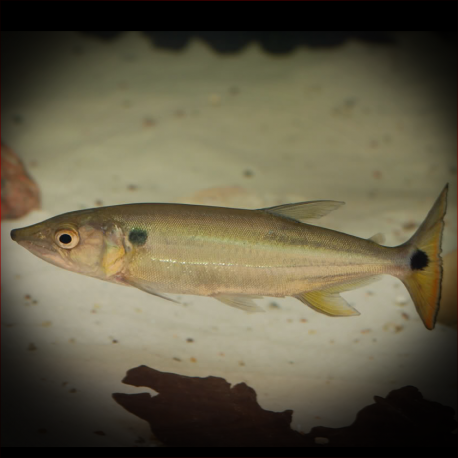More info
Datasheet
| Minimum Tank Size | 2000 litres / 528.34 US gallons |
| Maximum Size | 24.0cm / 9.45inches |
| Temperature | 22°C / 71.60°F - 28°C / 82.40°F |
| Hardness | 2.02dgH / 36ppm - 12.05dgH / 215ppm |
| pH | 6.0-7.5 |
General Description
Acestrorhynchus pantaneiro, commonly known as Pantaneiro Acestrorhynchus, is a member of the Acestrorhynchidae family within the order Characiformes. It is a predatory species characterized by its blackish, circular-shaped humeral spot. This fish is part of the putative 'A. lacustris group' and closely related to other species like A. abbreviatus, A. lacustris, and A. pantaneiro.
Aquarium Setup
The Pantaneiro Acestrorhynchus thrives in a habitat with minimal decorations to reduce stress, requiring an open water environment with ample swimming space. A sandy substrate with the addition of leaf litter and driftwood or roots is suitable, complemented by plants like Microsorum pteropus or Anubias spp. It is crucial to have a tight-fitting cover on the tank due to the species' jumping tendencies. Filtration should be efficient with external canister filters or a sump system, and regular water changes are essential for maintaining water quality.
Behaviour
This species is relatively peaceful towards larger tankmates that it cannot swallow and can be kept in a community setting if paired with compatible companions. Pantaneiro Acestrorhynchus displays territorial behavior, making it crucial to avoid aggressive or competitive species in the tank. While not aggressive towards conspecifics, juveniles tend to exhibit schooling behavior, with older individuals being more solitary but still occasionally grouping together. Cannibalistic tendencies are noted among Acestrorhynchids, emphasizing the need to ensure similar sizes within a group.
Feeding and Diet
As an obligate piscivore, Pantaneiro Acestrorhynchus feeds on relatively large prey compared to its size. While they may initially prefer live fish, introducing dead prey and dried foods is possible. Feeding mammalian or avian meat like beef heart is discouraged due to potential health risks, and live feeder fish should be avoided to prevent parasite transmission.
Reproduction & Dimorphism
Reproduction in Acestrorhynchus species, like the congener A. falcatus, typically involves midwater spawning with minimal parental care. Mature females tend to be slightly larger and deeper-bodied compared to males, showcasing sexual dimorphism within the species.
Habitat and Distribution
Inhabiting major river channels and tributaries, Pantaneiro Acestrorhynchus ventures into flooded zones during the wet season. Its distribution spans regions like the lower Rio Paraná, Rio Uruguay, Rio de la Plata, and Rio Mamoré across countries like Brazil, Paraguay, Uruguay, Argentina, and Bolivia. Ongoing taxonomic challenges contribute to uncertainty regarding the species' full natural range.

